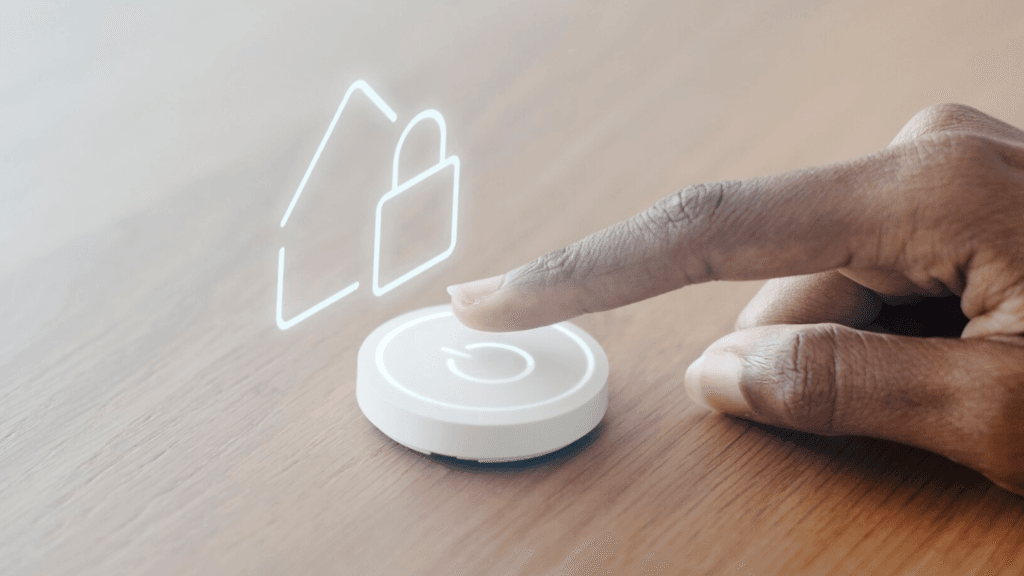As smart homes evolve, security risks and technology changes can affect your setup. Future-proofing your smart home ensures long-term compatibility, protection from cyber threats, and scalability for new technologies.
🔹 1. Smart Home Security: Protecting Devices & Data
With AI-driven automation and IoT devices, cybersecurity is critical. Here’s how to secure your smart home against cyber threats and physical intrusions.
📌 Best Practices for Smart Home Cybersecurity:
✅ Use a Separate Smart Home Network → Keep IoT devices on a dedicated Wi-Fi network.
✅ Enable Multi-Factor Authentication (MFA) → Secure your smart home accounts.
✅ Regularly Update Firmware & Software → Fix vulnerabilities with updates.
✅ Change Default Device Passwords → Use unique, strong passwords.
✅ Disable Unused Features → Turn off unnecessary remote access options.
🔄 AI-Powered Security Monitoring:
✔️ Bitdefender Box 2 – AI-driven network protection for IoT devices.
✔️ Firewalla Purple – Monitors smart home traffic & blocks threats.
✔️ Eero Secure+ – Built-in security for Amazon Eero mesh Wi-Fi.
💡 Tip: Use VPN for home networks to encrypt smart device connections.
🔹 2. AI-Powered Smart Home Security Systems
Smart security systems use AI-driven detection, facial recognition, and real-time alerts to keep your home safe.
📌 Best Smart Security Solutions:
✔️ Google Nest Secure – AI-powered cameras with facial recognition.
✔️ Ring Alarm Pro – Built-in eero mesh Wi-Fi for better security.
✔️ Arlo Ultra 2 / EufyCam 3 – 4K security cameras with AI person detection.
✔️ August Wi-Fi Smart Lock / Level Lock+ – Secure keyless entry.
🔄 AI-Based Security Automations:
✅ Facial recognition cameras → Identify family & alert unknown visitors.
✅ Geofencing → Locks doors & arms the system when you leave.
✅ Smart floodlights & sirens → Activate if motion is detected at night.
✅ AI voice alerts → Security systems can talk to intruders.
💡 Tip: Set up emergency automation (e.g., “Hey Google, call 911” with Nest Aware).
🔹 3. Future-Proofing Your Smart Home: Compatibility & Upgrades
Technology evolves quickly. To prevent outdated systems and expensive replacements, ensure your setup is future-proof.
📌 How to Ensure Long-Term Compatibility:
✅ Use Devices with Matter & Thread Support – A universal smart home standard for cross-device compatibility.
✅ Choose Open-Source or Expandable Platforms – Home Assistant, Apple HomeKit, and SmartThings support long-term updates.
✅ Invest in Modular Smart Home Hubs – Future upgrades without replacing devices.
✅ Prioritize Local Processing Over Cloud – Devices that work without the internet last longer.
🔄 Smart Hubs That Support Future-Proofing:
✔️ Home Assistant (Raspberry Pi/NAS-based) – Open-source & highly customizable.
✔️ Hubitat Elevation – Local automation without cloud dependency.
✔️ Amazon Echo 4th Gen / Google Nest Hub – Supports Matter, Thread, & Zigbee.
💡 Tip: Avoid vendor lock-in by choosing devices that work across multiple ecosystems.
🔹 4. AI & Machine Learning: Evolving with Your Home
AI will continue to improve smart home automation, learning behaviors and predicting actions.
📌 How AI Future-Proofs Smart Homes:
✅ Machine learning optimizes automation → AI predicts routines & adjusts devices.
✅ Natural language processing (NLP) evolves → Voice assistants become smarter over time.
✅ Predictive maintenance → AI detects potential device failures before they happen.
✅ Energy efficiency optimizations → AI learns how to reduce power consumption.
💡 Tip: Use ChatGPT API with Home Assistant for custom AI home automation & personalized interactions.
🔹 5. Scalability: Expanding Your Smart Home Over Time
A scalable smart home setup ensures you can add new devices & upgrade without starting over.
📌 How to Make Your Smart Home Expandable:
✅ Use a Central Smart Hub → Zigbee, Z-Wave, Matter-supported hubs for easy expansion.
✅ Choose Devices That Work Together → Stick with brands that support Matter, HomeKit, Alexa, and Google Assistant.
✅ Opt for Modular Smart Switches & Sensors → Easily replace or expand home automation.
✅ Plan for Future Internet Needs → Mesh Wi-Fi for better coverage.
💡 Tip: Ensure your home’s electrical system can support new smart tech (dedicated circuits for EV chargers, solar inverters, etc.).
🔹 6. Backup & Disaster Recovery: Keeping Your Smart Home Running
To avoid system failures or downtime, have backup solutions in place.
📌 Smart Home Backup Strategies:
✅ Uninterruptible Power Supply (UPS) – Prevents smart home hubs from shutting down.
✅ Battery Backup for Security Cameras – Ensures continued recording.
✅ Redundant Internet Connection (5G/LTE Router) – Keeps automation online.
✅ Manual Overrides for Smart Devices – Always have a way to control locks, thermostats, and lights manually.
💡 Tip: Home Assistant Yellow + Raspberry Pi allows local automation that works even during internet outages.
🔹 7. Sustainable Future-Proofing: Green Smart Homes
Smart homes should be energy-efficient & sustainable while remaining adaptable to future green technologies.
📌 Best Practices for Eco-Friendly Future-Proofing:
✅ Solar panels & smart battery storage – Tesla Powerwall, Enphase IQ.
✅ Smart energy monitoring – Sense, Emporia Vue 2.
✅ Energy-efficient appliances with AI optimization – LG AI DD, Samsung SmartThings Energy.
✅ Water conservation tech – Rachio Smart Irrigation, Moen Flo leak prevention.
✅ Passive smart home design – Smart windows, insulation, automated shading.
💡 Tip: Look for Energy Star-rated smart appliances with long-term software support.
🔹 Final Checklist: Future-Proof & Secure Your Smart Home
✅ Use a secure smart home network – Separate IoT from main Wi-Fi.
✅ Enable encryption & two-factor authentication (2FA).
✅ Choose AI-powered security cameras & smart locks.
✅ Adopt devices with Matter & Thread for long-term compatibility.
✅ Invest in a smart hub (Home Assistant, Hubitat, SmartThings).
✅ Prepare for internet/power outages with backup solutions.
✅ Automate energy efficiency & sustainability.
✅ Keep firmware updated & use AI for predictive maintenance.
🔹 Want recommendations on specific future-proof devices or setup guides? Let me know! 😊




